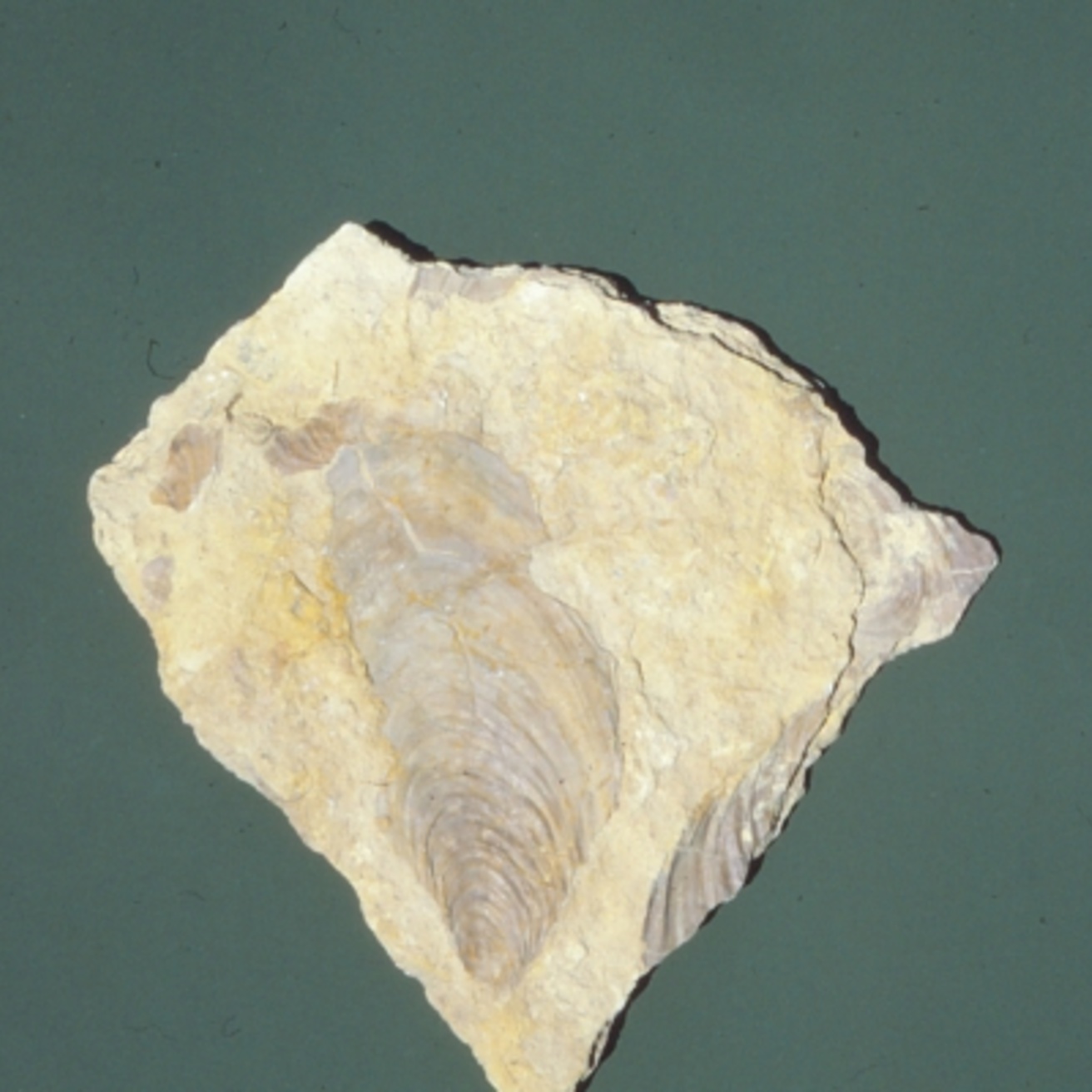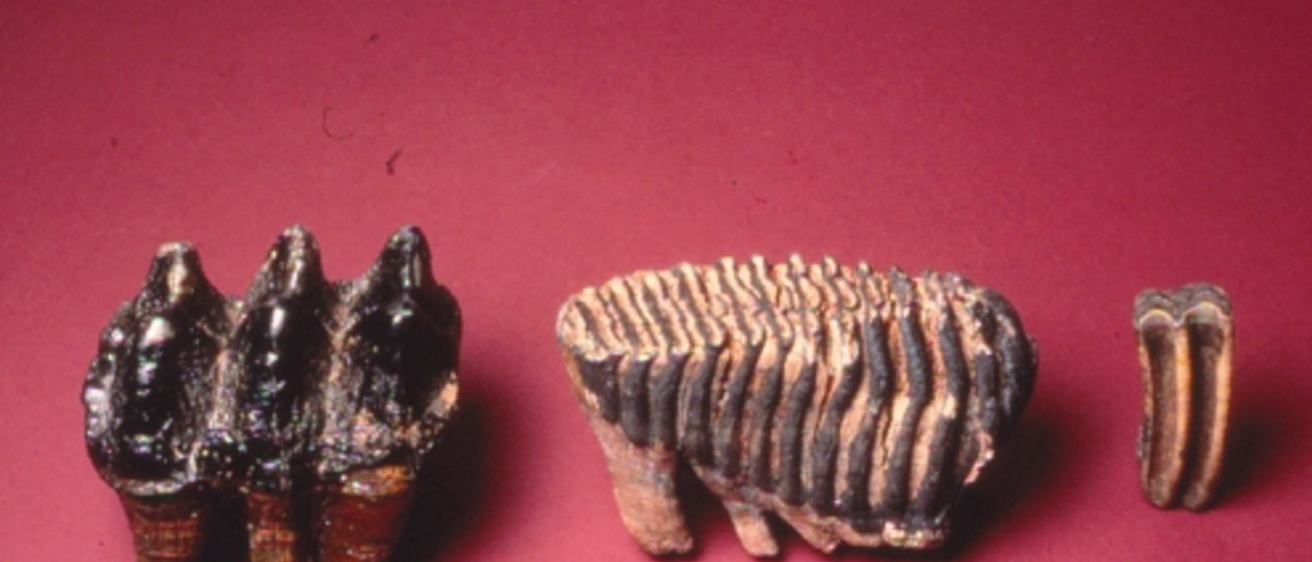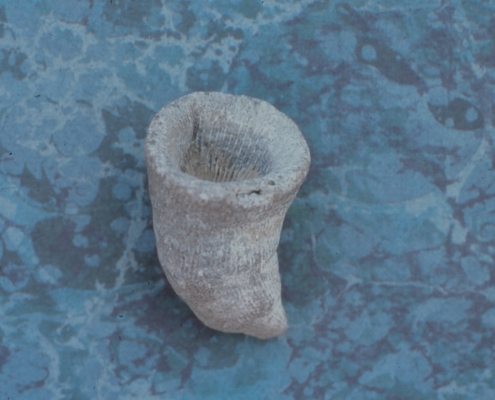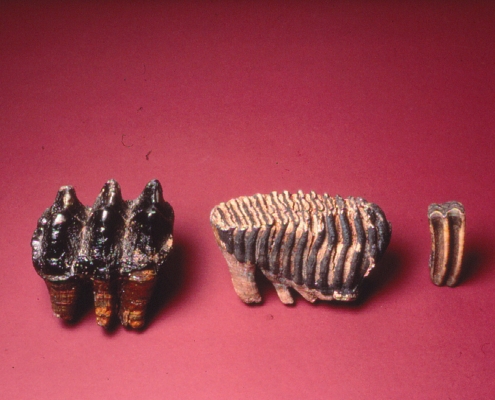Many people become interested in geology after finding fossils. Holding the shell of a sea-dwelling organism found in an Iowa rock, far from the nearest ocean, makes us think about the vast changes that have occurred over the Earth’s surface and the great length of geologic time that has passed.
Studying fossils helps us appreciate the history of life on Earth. They provide a link between geology and biology that is valuable to the study of global changes and how life adapts. Fossil remains also are an important tool in dating different rock layers, and in comparing the sequence of strata from place to place across broad areas. Iowa has many well known fossil-bearing rock formations, and fossils from around the state have found their way into museums around the world. These pages help to identify a few of Iowa’s many fossils that may be found by careful observation of road cuts, quarries, stream banks and other exposures of earth materials.
Colonial Coral
Bottom-dwelling corals lived in reef-like communities in warm, clear, tropical seas covering Iowa. Many species were colonial, living together in a mass of individual skeletons of lime, resembling a honeycomb. Distinctive colonial forms from eastern Iowa include the “chain coral” (left), Pachyphyllum (middle), and Lithostrotionella (right). They were especially abundant in Devonian and Silurian seas, 375 to 425 million years ago.


Gastropod
Shells of marine animals are often preserved as fossils. This coiled shell from Winneshiek County was inhabited by a snail. The sluggish, bottom-dwelling mollusk scavenged or grazed the ancient sea floor about 440 million years ago (Ordovician). The snail moved on a flat muscular foot and could withdraw inside its shell for protection.

Trilobites
Prized by collectors, whole trilobites usually display a three-lobed, oval-shaped, segmented skeleton, often with distinct eyes. They belong to an extinct group of bottom-dwelling, hard-shelled arthropods that scavenged the sea floor. These Scott County specimens are 375 million years old (Devonian).
Bryozoan
“Moss animals” were also colonial, filter-feeding organisms that inhabited the sea floor. A well known bryozoan (Archimedes) consisted of concentric rows of lace-like fronds attached to a corkscrew-shaped axis. The preserved core is seen in this Lee County specimen (340 million years old, Mississippian).
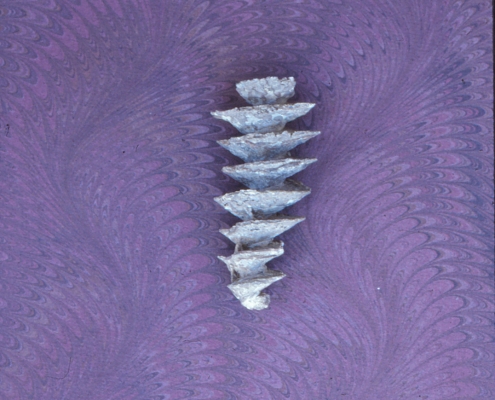

Cephalopods
These squid-like animals lived in chambered shells and could propel themselves by ejecting water from a tube near their head. The shell’s partitions were filled with gas, enabling the animal to regulate its buoyancy. These straight-shelled cephalopods (left), from Marion County are 300 million years old (Pennsylvanian).
Would you like to collect your own piece of Iowa history? Anyone can collect fossils at the Fossil and Prairie Park Reserve near Rockford, Iowa. Download our Fossil & Prairie Park brochure (PDF).
More on Fossils
- “A Visitor’s Guide to Geologic Features at the Coralville Lake Emergency Spillway”
- “Ancient Amphibians in Iowa”
- Also see: “Ancient Amphibians Discovered in Iowa”: Iowa Geology, No. 11, 1986, p. 24–25
- Dinosaurs in Iowa
Additional links
- “Fossil Corals in Iowa”: Iowa Geology, No. 14, 1989, p. 26-27
- “Fossils Yield Key to Ice-Age Ecology”: Iowa Geology, No. 11. 1986, p. 24-25
- “Fossil Beetles in Iowa”: Iowa Geology, No. 10, 1985, p. 27
- “Fossils: Evidence of Ancient Life in Iowa”: Iowa Geology, No. 8. 1983, p. 4-9
Photographs by Paul VanDorpe. Photo setups by Patricia Lohmann.
Adapted from Iowa Geology 1993, No. 18, Iowa Department of Natural Resources.




